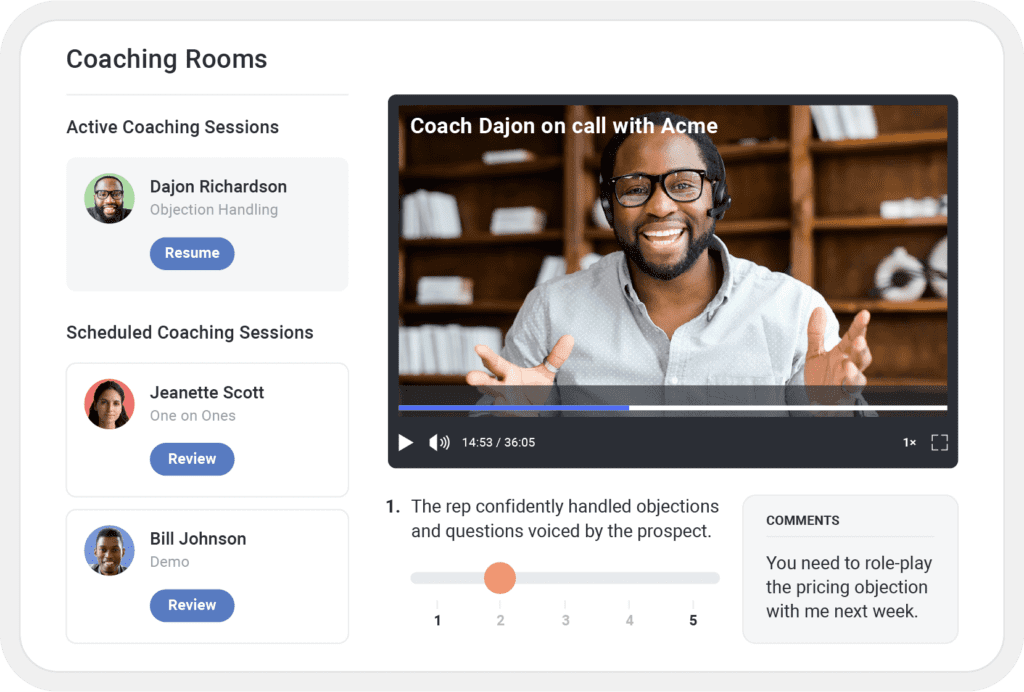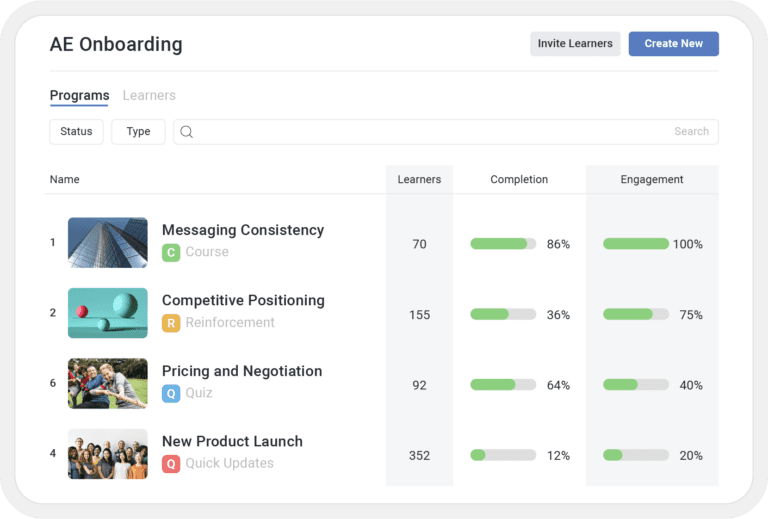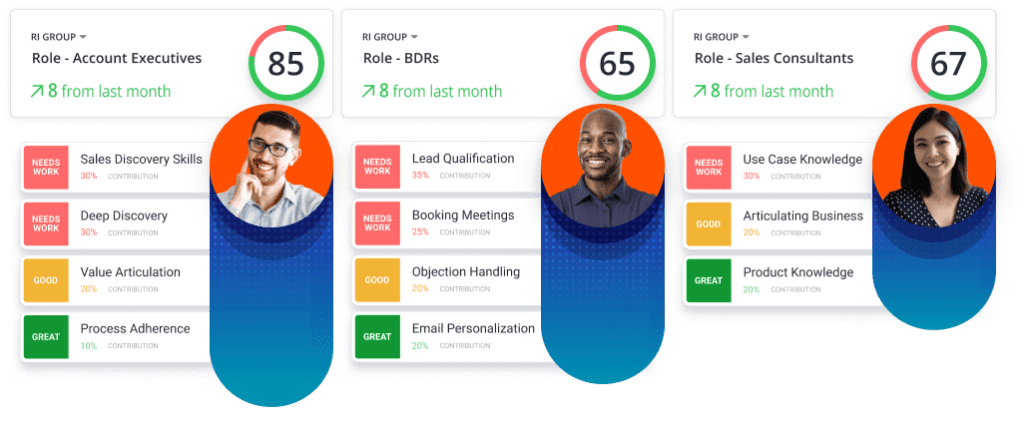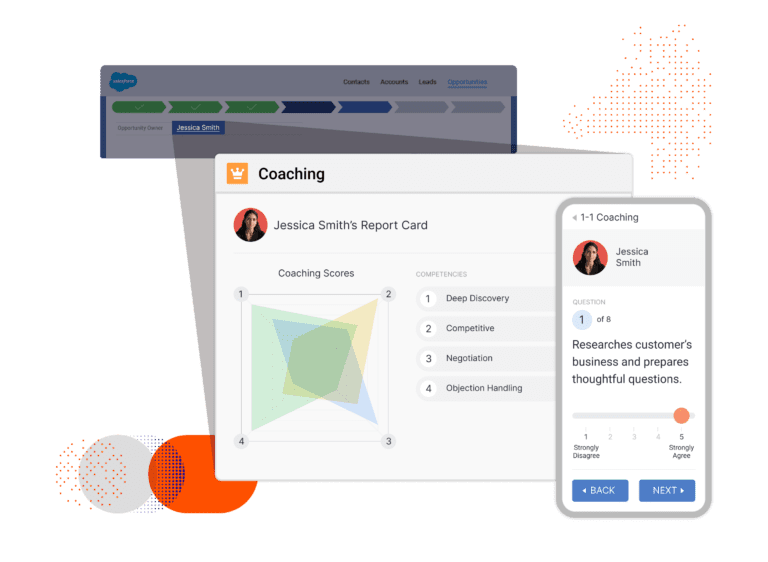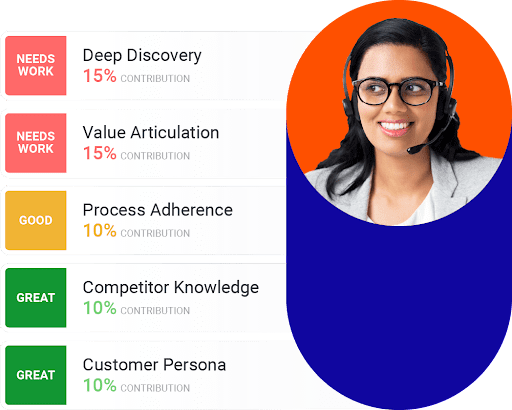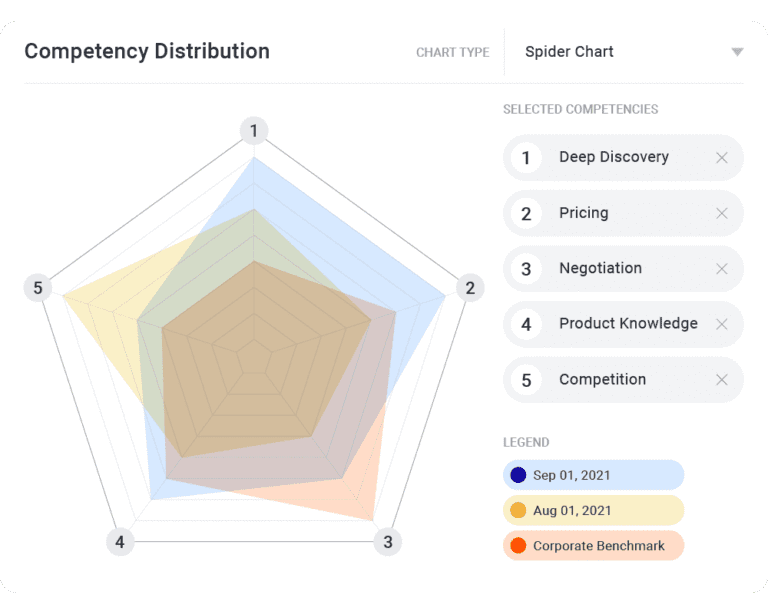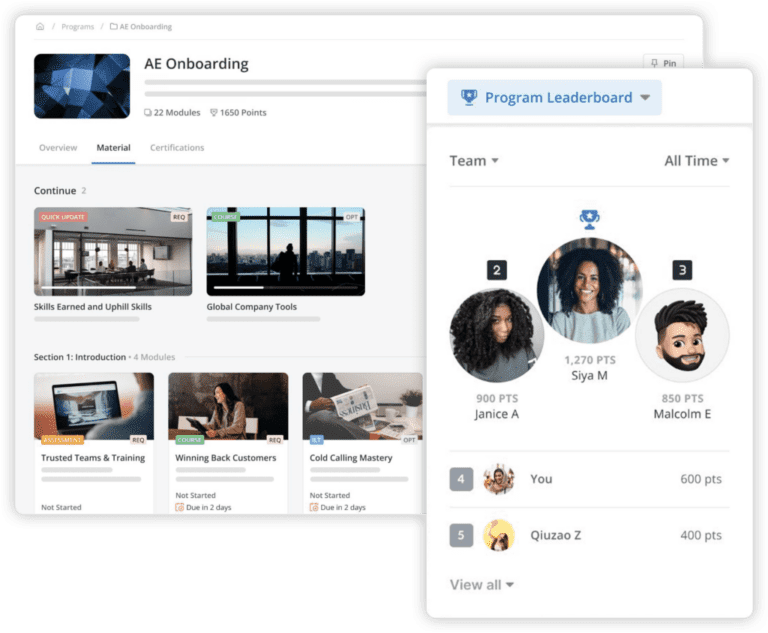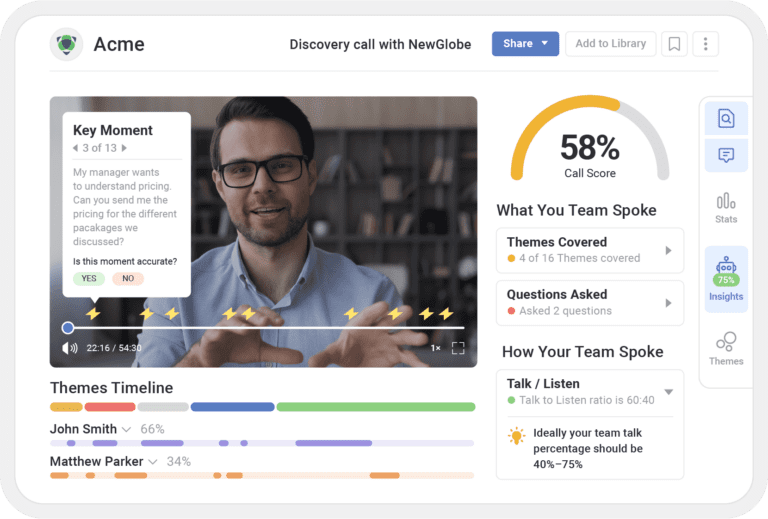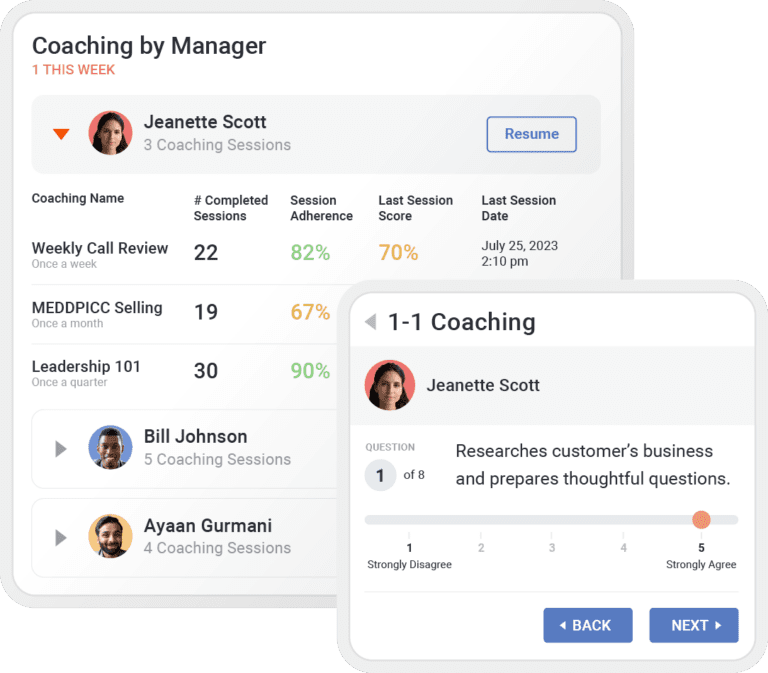Do These 8 Things to Create Effective Sales Enablement Goals
![]() Vivian Batman
on
May 29, 2024
Vivian Batman
on
May 29, 2024
If your sales reps are regularly missing quota, you’re not alone. A survey from Salesforce found that just 28% of sales professionals expect their team to hit quota.
But that doesn’t mean it’s time to throw in the towel.
Increasingly, revenue organizations are turning to sales enablement to ensure their sales reps have the skills needed to be successful in the field. According to the 2024-2025 Chief Revenue Officer + Sales Leader Outlook Report, 84% of C-suite executives invest in a sales enablement team.
According to research
Setting goals is foundational to any successful sales enablement strategy. After all, how can you create sales enablement programs and initiatives if you haven’t first defined what you’re trying to achieve?
In this post, we’ll explore sales enablement goals and why they matter. We’ll also share some best practices for setting goals that work for your organization and some real-life examples.
Why are sales enablement goals necessary?
What exactly are sales enablement goals? Let’s start by defining what sales enablement is.
Sales enablement is the practice of equipping the revenue organization with the information, training, content, and tools needed to increase effectiveness and efficiency. Because each sales rep is different, a generic approach to sales enablement won’t cut it. Instead, organizations must create and deliver enablement that’s tailored to each seller’s needs.
These goals are the objectives you have for sales enablement efforts. In other words, they spell out what you hope to achieve with your sales enablement strategy, program, and initiatives.
Do sales enablement goals matter?
Establishing goals takes time. Is it worth the effort?
Absolutely yes.
Goals are critical to any sales enablement initiative. Without them, creating effective sales enablement programs and measuring their success is impossible.
For example, let’s say you’ve been tasked with developing a new sales onboarding program. There are no clear goals for the program beyond a generic goal of “onboarding new reps.” Because there are no clear goals, you’re unsure what content needs to be created and how and when it should be delivered.
Furthermore, without clear goals, the new onboarding program’s success or failure will be impossible to measure.
Establishing goals is key to developing the right programs and initiatives. For example, if increasing buyer engagement is the goal, your team can create a sales playbook to help achieve that goal. Or, if decreasing sales cycles is a key objective, you can develop content to accelerate sales.
Establishing goals is also important to ensure everyone is aligned on what you’re trying to achieve with your sales enablement initiatives.
When everyone is on the same page, you’re more likely to achieve your goals. In addition, with sales enablement goals in place, you can more effectively measure success and identify areas for improvement.
How to define sales enablement goals for your organization
Sales enablement goals serve as the north star for your sales enablement programs and initiatives. But what’s the best way to set them for your organization? There are a few important steps to follow.
Step 1: Consider your overall business objectives
Sales enablement goals can’t be set in a vacuum. Instead, they must align with the organization’s overall goals. As such, the first step is to understand the organization’s goals as a whole.
Step 2: Reflect on where you are now
Before determining your goals, you must take a hard, honest look at your current state. As part of your assessment, be sure to look at:
- How are your teams performing
- What challenges your teams are facing
- What opportunities may lie ahead
This reflection should be a cross-functional effort as each team provides a unique perspective.
For example, marketing may spend a lot of time creating sales content – but sales may share the perspective that content is hard to find or they’re unable to find the right content for certain sales scenarios. Or, marketing may generate a high volume of leads. However, sales may find that a large portion of these leads end up being unqualified.
Step 3: Define your sales enablement goals
Once you understand where you are today, you can better determine your goals for the future. For example, you might set a sales enablement goal to decrease new ramp rep time. Or, perhaps you’re aiming to decrease sales cycles and increase quota attainment.
Setting vague sales goals like “improve seller performance” isn’t effective. Instead, a best practice is using the SMART methodology to set sales enablement goals. SMART goals are:
- Specific: Be extremely clear about what you hope to accomplish.
- Measurable: Make sure your sales enablement goal can be measured with the right metrics.
- Attainable: Sales enablement goals should be challenging yet realistic. If you set sales enablement goals that are too easy, you’ll never achieve your full potential. If sales enablement goals are too hard, you’ll never achieve them, negatively impacting morale.
- Relevant: Sales enablement goals should be relevant to the goals of the revenue organization and the company.
- Time-bound: The sales enablement goal should have a specified time frame for achieving it. For example, you might set a sales enablement goal to increase quota attainment by 15% during Q4 2024.
Step 4: Identify key sales enablement metrics
Once you’ve defined your goals, you must determine which metrics you will track to measure your progress.
The sales enablement metrics you must track vary depending on your goals. However, some examples of sales enablement metrics include:
- Average time to productivity
- Win rate
- Conversion rate
- Average deal size
- Sales cycle length
- Quota attainment
- Time to quota
- Content adoption
- Sales rep retention
- Adherence to sales methodology
Step 5: Socialize your sales enablement goals
Once you’ve established your sales enablement goals, it’s important to communicate them. Be sure all key stakeholders understand the goals of sales enablement and their role in achieving those goals.
Step 6: Ensure you have the right sales enablement tools
The sales tech stack is a key piece of any sales enablement strategy. With the right sales enablement tools, you can build and deliver winning sales enablement programs. These tools can also give you the metrics to gauge progress on your sales enablement goals.
Today, many enterprise software solutions promise to boost your sellers’ performance. However, many sales enablement software options address just a single aspect of sales enablement.
For example, learning management systems are used to deliver training. Sales content management systems provide a solution for storing and organizing sales content.
Typically, these sales enablement solutions provide data and analytics. But if you use multiple sales enablement tools, it can be challenging to get a holistic view of how your sales enablement initiatives are (or aren’t) impacting business outcomes.
Instead, consider consolidating your sales enablement tech stack by adopting an integrated platform. An integrated sales productivity platform like Mindtickle incorporates all the key pillars of sales enablement, including sales content, sales coaching, sales training, and conversation intelligence.
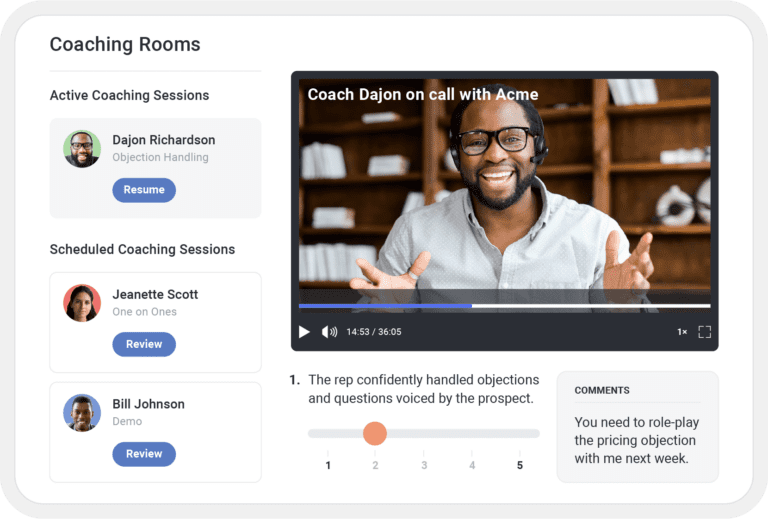

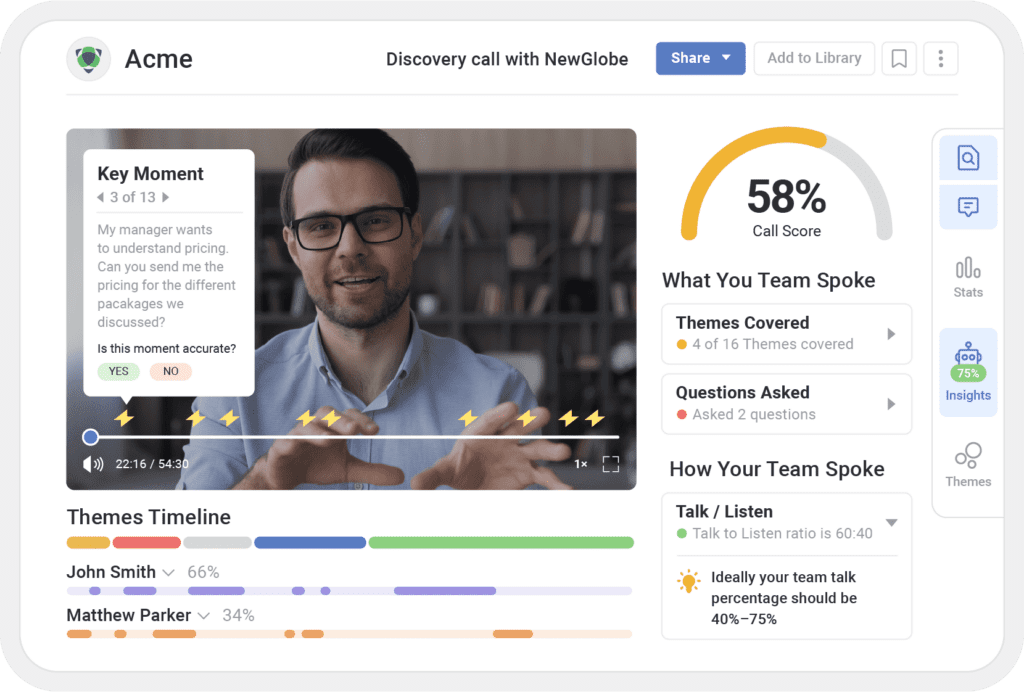

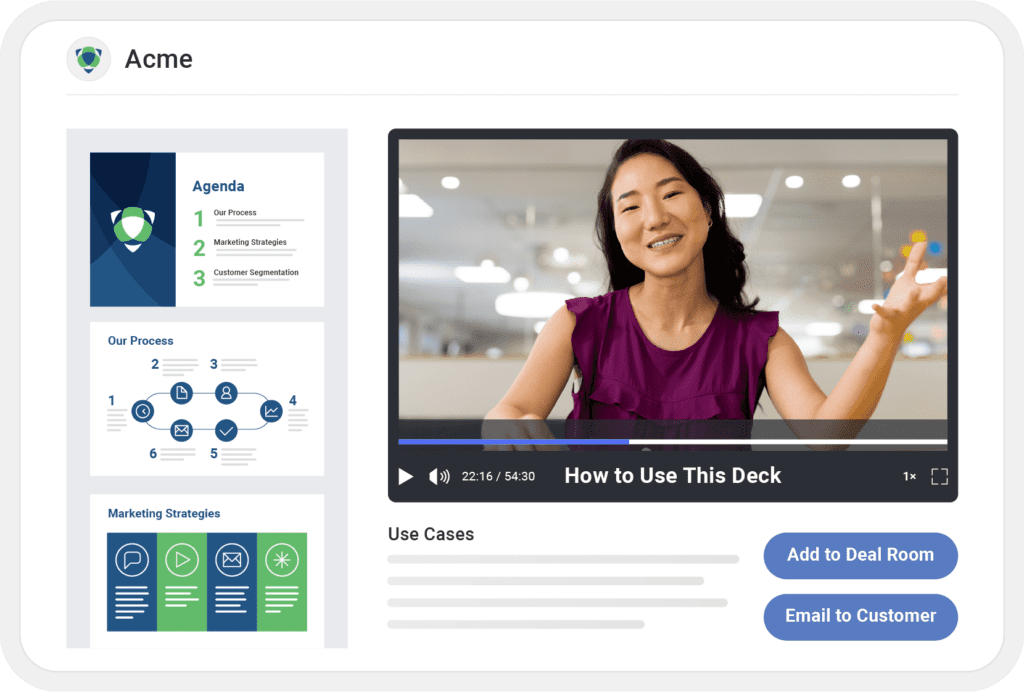

When a single platform powers your entire sales enablement program, you can also get a 360-degree view on how all sales enablement initiatives—from content to training to coaching—are impacting sales outcomes.
Step 7: Monitor and track progress towards your sales enablement goals
Of course, you can’t simply set your sales enablement goals and never think about them again. Instead, you must regularly track your key metrics to understand whether you’re on track to achieve the sales enablement goals and where there may be opportunities to make adjustments.
For example, one of your goals is to shorten the sales cycle. However, upon analysis, you find that the sales cycle is increasing. You dig further and find that prospects often drop off at the negotiation stage. This may be an opportunity to optimize your existing training and enablement related to negotiation – or create something new.
As a reminder, regular measurement requires the right sales enablement software. Your chosen solution should go beyond adoption to show how (or whether) your initiatives are making an impact.
Step 8: Be prepared to adapt
Change is always guaranteed. New products are introduced, and old ones are retired. New competitors enter the scene, and customer expectations evolve.
Adjusting your goals may sometimes be necessary based on these changes.
Examples of sales enablement goals
Now that we’ve explored why sales enablement goals matter and how you can set better goals for your organization, let’s look at some real-life examples.
| Focus | Sales enablement goal example |
|---|---|
| Conversion rate | Increase the percentage of leads that convert to customers by 5% in Q4 2024 |
| Sales cycle length | Decrease the average sales cycle length by 10 days by the end of 2024 |
| Ramp time | Decrease new rep average time to productivity by 10% in Q1 2025 |
| Quota attainment | Increase the portion of sales reps that achieve at least 75% of their quotas by 18% in 2025 |
| Sales coaching | Increase the average number of coaching sessions delivered by sales managers in the Northwest region by 10% in the next 60 days. |
| Product knowledge | Achieve 90% completion of new product training in Q1 2025, with at least 75% of sales reps achieving a 80% or higher on assessment |
Achieve all of your sales enablement goals with Mindtickle
Leading organizations are investing in sales enablement teams and tools, and it’s no wonder why. When it’s done well, sales enablement can greatly impact sales performance.
It’s important to set clear goals for your sales enablement programs. Then, you can develop initiatives that’ll help you achieve those goals. Remember: regular measurement is key to understanding how your efforts are performing and where there are opportunities for improvement.
The right sales enablement technology is key to developing effective sales enablement and measuring its impact on the metrics that matter most to your business. But, adding multiple sales enablement solutions to your software stack can create chaos. Instead, leading revenue teams opt for an integrated revenue productivity platform like Mindtickle.
Mindtickle incorporates sales training, enablement, sales content, and call insights—all from one platform. Sales enablement teams can develop and deliver enablement that addresses the needs of each sales rep. Sales reps can access everything they need to be ready to sell—all in one place.
Sales Enablement in Mindtickle
Ready to see why winning revenue teams choose Mindtickle to build a team of high-performing, quota-crushing reps?
Request a Demo


